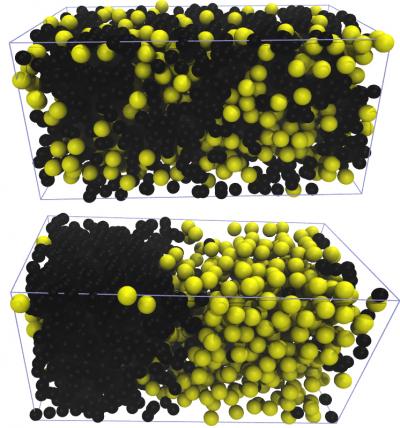CLOUD
Active particles may enhance phase separation

Model system used to illustrate phase transition of a mixture of active and passive particles
Systems containing self-propelling particles, such as bacteria or artificial colloidal particles, are always out of equilibrium but may show interesting transitions between different states, reminiscent of phase transitions in equilibrium. However, application of analytical and computational methodologies from equilibrium statistical mechanics is questionable to study properties of such active systems. An international team of researchers – including Dr. Peter Virnau and Professor Kurt Binder of Johannes Gutenberg University Mainz (JGU), Benjamin Trefz of the JGU Graduate School of Excellence "Materials Science in Mainz" (MAINZ), and scientists from India and the U.S. – has studied the phase separation of a mixture of active and passive particles via molecular dynamics simulations and integral equation theoretical calculations. The distinctive feature of the model used is that the "activity" of the particles is tunable, containing passive particles as a limiting case for which already phase separation occurs.
"Our research results demonstrate that the introduction of activity may not only hamper phase separation as shown previously, but can enhance it as well, based on the coordination among the active particles," explained Dr. Peter Virnau of the Institute of Physics at Mainz University. Moreover, the researchers provided an approximate mapping of the phase behavior and structural properties of this nonequilibrium problem onto an equilibrium problem. A general validity of this mapping is subject to further careful testing. The confirmation of such validity would be an important step forward in understanding properties of active matter.
